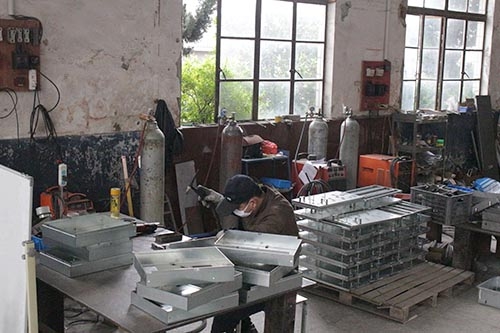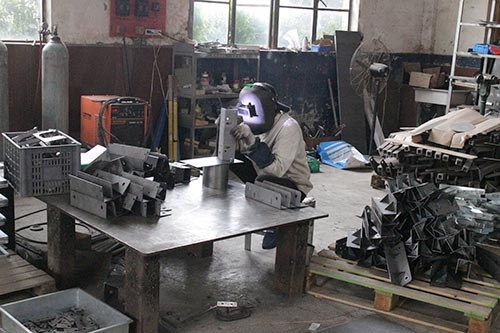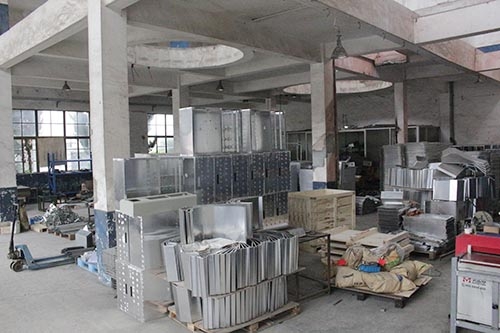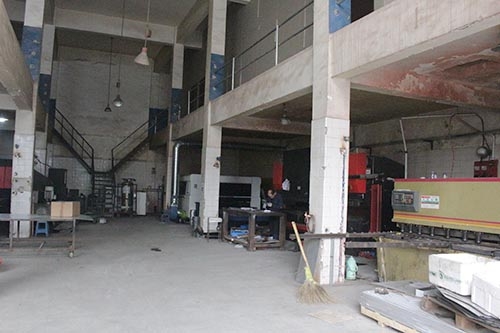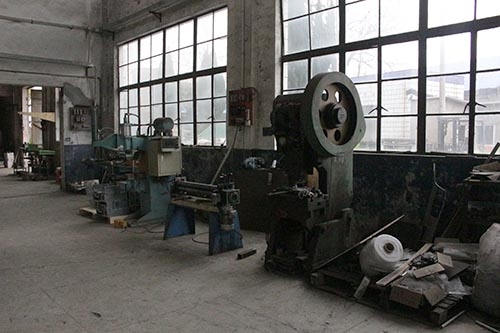Sheet metal processing precautions and processing flow introduction
Release date:2019-04-13
Sheet metal processing is called sheet metal processing. For example, the use of sheet metal to make chimneys, iron drums, oil tank oil pots, ventilation ducts, elbow heads, Tianyuan places, funnels, etc., the first process is shearing, bending buckles, zigzag forming, welding, riveting, etc. There must be a little knowledge. Sheet metal parts are thin-plate hardware, which is a part that can be processed by stamping, zigzag, stretching, etc. A general definition is a part with constant thickness during processing. Corresponding to the casting part , forging parts, machined parts, etc.;
Selection of sheet metal processing materials
The materials commonly used in sheet metal plus are cold rolled sheet (SPCC), hot rolled sheet (SHCC), galvanized sheet (SECC, SGCC), copper (CU) brass, copper, beryllium copper, aluminum sheet (6061, 6063, Hard aluminum, etc., aluminum profiles, stainless steel (mirror surface, brushed surface, matte surface), depending on the product effect, the choice of materials is different, generally need to consider the product's use and cost.
1. Cold rolled plate SPCC, the first use of electroplating and baking materials, low cost, easy to form, data thickness ≤ 3.2mm.
2. Hot rolled plate SHCC, data T ≥ 3.0mm, is also used for electroplating, painted parts, low cost, but difficult to form, the first use of flat pieces.
3. Galvanized sheet SECC, SGCC. SECC electrolytic board is divided into N material and P material. N material is not used for external treatment. The cost is high, and P material is used for spraying parts.
4. Copper: The first thing to use conductive materials, its appearance is nickel-plated, chrome-plated, or not treated, the cost is high.
5. Aluminum plate: generally used external chromate (J11-A), oxidation (conductive oxidation, chemical oxidation), high cost, silver plating, nickel plating.
6. Aluminium profiles: Parts with complex cross-sections are used in a variety of plug-in boxes. The exterior is treated with an aluminum plate.
7. Stainless steel: The first thing is to use no external treatment, the cost is high.
Sheet metal opening notice
The open drawing is a plan view (2D) opened according to the part drawing (3D)
1. The opening method should be combined to save data and processability.
2. Reasonable selection of gap and edge method, T=2.0 below the gap 0.2, T=2-3 gap 0.5, the edge method uses the long side package short side (door panel)
3. Reasonable consideration of the tolerance shape scale: the negative difference goes to the end, the positive difference is half; the hole shape scale: the positive difference goes to the end, the negative difference goes half.
4. Burr direction
5. Tooth extraction, riveting, tearing, punching (package), etc., to draw a cross-sectional view
6. Check material, plate thickness, thickness tolerance
7. Special point of view, the inner radius of the bend angle (generally R = 0.5) is to be opened according to the trial
8. There are easy to make mistakes (similar to asymmetry) should be prompted
9. More scales should be enlarged
10. Need to spray maintenance place must indicate
Shanghai sheet metal processing
Sheet metal processing process
Depending on the structure of the sheet metal parts, the process flow can vary, but the total does not exceed the following points.
1, cutting: there are various methods of cutting, the first few methods
1. Shearing machine: It is a simple material that uses shearing machine to cut strips. It is mainly for the processing of mold blanking and forming. The cost is low and the precision is less than 0.2, but only the strips or blocks without holes and chamfers can be processed.
2. Punch: It is a punching and forming of various shapes of the flat parts after the sheet metal parts are opened in one step or more steps by using a punching machine. The advantages are short labor hours, high power, high precision, low cost, and suitable for mass production. Plan the mold.
3. NC NC cutting, NC machining is first to write a CNC machining program, using the programming software, the drawing of the open drawing is written into a program recognizable by the NC number processing machine, so that it can be punched on the flat plate according to these programs. The shape of the flat piece, but its structure is due to the tool structure, the cost is low, the accuracy is 0.15.
4. The laser cutting method uses a laser cutting method to cut out the structural shape of the flat plate in a large flat plate. The same laser cutting program is required to be the same as the NC blanking. It can be used for various complicated shapes of flat plates, with high cost and precision. 0.1.
5. Sawing machine: The first use of aluminum profiles, square tubes, tubes, round bars, etc., low cost and low precision.
1. Fitter: counterbore, tapping, reaming, drilling The counterbore is generally 120 ° C for rivets, 90 ° C for countersunk screws, and tapping for the bottom hole.
2. Flanging: Also known as punching or turning, it is to draw a slightly larger hole on a smaller base hole, and then tapping. First, use thin sheet metal processing to add strength and thread ring. Number, to prevent slippery teeth, generally used for relatively thin plate thickness, the normal shallow shallow flange of the hole, the thickness has not changed at all, promised to have a thickness of 30-40%, can be higher than the normal cuff height 40 -60% of the height, when the thickness is 50%, the maximum flange height can be obtained. When the thickness is large, such as 2.0, 2.5 or more, the thickness can be directly tapped.
3. Punch: It is a processing process using mold forming. Generally, there are punching, chamfering, blanking, punching and convex (bump), punching, punching, forming and other processing methods for punching, and the processing requirements are corresponding. The mold is finished, such as punching blanking die, convex punching die, tearing die, punching die, forming die, etc., and the operation first pays attention to orientation and directionality.
4. Pressing riveting: For the company, the first place is the rivet nut, the screw, the loose plug, etc. It is finished by hydraulic riveting machine or punching machine, riveting it to the sheet metal part, and riveting Method, you need to pay attention to the direction.
5. Bending; bending is a part of a 2D flat piece that is successfully folded. The processing demand has a folding bed and the corresponding bending die is completed, and it also has a certain bending order. The principle is that the first knife does not dry and the first folding, and the dry and the backward folding will occur.
l The number of bends is T=3.0mm and 6 times the thickness calculation slot width, such as: T=1.0, V=6. 0 F=1.8, T=1.2, V=8, F=2.2, T=1.5, V=10, F=2.7, T=2.0, V=12, F=4.0
l Folding bed mold classification, straight knife, machete (80 ° C, 30 ° C)
l When the aluminum plate is bent, there is a crack, and the lower die groove can be added to add the upper die R (annealing can prevent cracks)
l Note when bending: I picture, the thickness and quantity of the plate are required; II bending direction III bending point of view; IV bending scale; VI appearance, chrome-plated parts are not allowed to have creases.
Bending is related to the riveting process. Under normal circumstances, the riveting is followed by bending, but after the material is pressed and riveted, it will be dry and then folded first, and some need to be bent---------------
6. Welding: The welding industry says: the atom and the molecules of the welded data are integrated into the lattice distance of Jingda.
1 Classification: a Fusion welding: argon arc welding, CO2 welding, gas welding, manual welding
b Pressure welding: spot welding, butt welding, bump welding
c Brazing: electric chrome welding, copper wire
2 welding method: a CO2 gas maintenance welding
b argon arc welding
c spot welding, etc.
d robot welding
The selection of welding method is based on actual requirements and materials. Generally, CO2 gas maintenance welding is used for iron plate welding; argon arc welding is used for welding stainless steel and aluminum plates, and robot welding can save man-hours and improve working power. And welding quality, reducing work intensity.
3 Welding symbols: Δ fillet weld, Д, I weld, V weld, single V weld (V) V-weld with blunt edge (V), spot weld (O), plug weld or groove weld (∏) , crimping (χ), single-sided V-weld (V) with blunt edge, U-weld with blunt, J-weld with blunt, back-sealing, welding
4 arrow lines and connectors
5 Welding loss and its defenses
Spot welding: insufficient strength can be used to bump, and the welding area is imposed
CO2 welding: high productivity, low energy consumption, low cost, strong rust resistance
Argon arc welding: shallow depth of dissolution, slow welding speed, low power, high production cost, tungsten defects, but good strength of welding, can weld non-ferrous metals, such as aluminum, copper, magnesium and so on.
6 Reasons for welding deformation: insufficient preparation before welding, need to add fixture
Welding fixture bad improvement process
Inferior welding order
7 Welding deformation effect method: flame effect method
Vibration method
Hammering
Artificial aging


